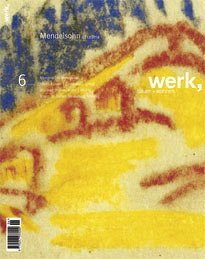Editorial
Editorial
When Rem Koolhaas published his epoch-making book „Delirious New York“ in 1978, he called it a „retroactive manifesto“. According to the author, most manifestos lack evidence to support their claims, whereas Manhattan, the object of his analysis, was „a mountain range of evidence“ which lacked a manifesto. Koolhaas supplied this manifesto; and today, we are aware that is was not only retroactive for a city district but rather had a visionary effect on global architectural production. But they do exist, manifestos on the delirium of new York - we have only to think of the descriptions witnessing the shock of the first encounters with the New World (which almost always took place in New York) and their literary or pictorial interpretations. One such example is Erich Mendelsohn's „America. Picture Book of an Architect“, whose publication in 1926 met with a tremendous response and which, with its suggestive visual language accompanied by direct, pithy texts certainly had the character of a manifesto. Mendelsohn was captivated by America, being both attracted and repulsed by the heights and depths of the American metropolis. Naturally, his fascination with the new, dynamic and unbridled predominated. Mendelsohn assimilated and integrated this new phenomenon. He gave it an architectural form, not the sober one of his contemporaries from „Neues Bauen“ but something far more imaginative that was free from dogmatic reservations towards the world of merchandise and consumption. Mendelsohn regarded the „corporate identity“ of the commercial buildings he designed as part of the architecture long before the term even existed. His commercial buildings are carefully developed with regard to their and public impact; light and lettering are an integral part, including the graphic image of the company and even the design of the site boarding and scaffolding, whose conspicuous design helped to restrict the fall in turnover caused by the building work. In this context, we can regard Mendelsohn's elegant trade buildings as ingenious, as it were implicit pre-forms of what is being built today in an explicit and cruder form, now that architecture has become a part of corporate identity rather than the other way round. Rem Koolhaas continues to provide the theoretical superstructure to the topical development - to whom, incidentally, Mendelsohn provided the dramaturgically conceived early form of the functional mix: his WoGa complex in Berlin, an ingenious combination of entertainment, shopping, culture and living accommodation. The links between the most recent developments and supposedly out-dated history are manifold. They show once again how well worthwhile historical research is. The Editors
